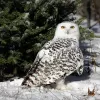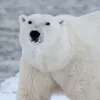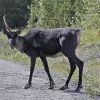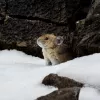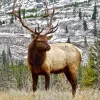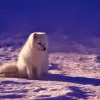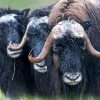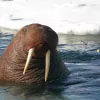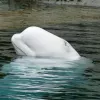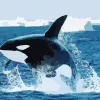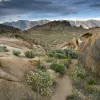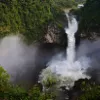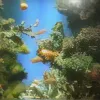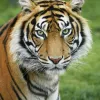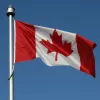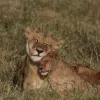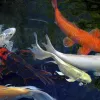Important update from TheSchoolRun
For the past 13 years, TheSchoolRun has been run by a small team of mums working from home, dedicated to providing quality educational resources to primary school parents. Unfortunately, rising supplier costs and falling revenue have made it impossible for us to continue operating, and we’ve had to make the difficult decision to close. The good news: We’ve arranged for another educational provider to take over many of our resources. These will be hosted on a new portal, where the content will be updated and expanded to support your child’s learning.
What this means for subscribers:
- Your subscription is still active, and for now, you can keep using the website as normal — just log in with your usual details to access all our articles and resources*.
- In a few months, all resources will move to the new portal. You’ll continue to have access there until your subscription ends. We’ll send you full details nearer the time.
- As a thank you for your support, we’ll also be sending you 16 primary school eBooks (worth £108.84) to download and keep.
A few changes to be aware of:
- The Learning Journey weekly email has ended, but your child’s plan will still be updated on your dashboard each Monday. Just log in to see the recommended worksheets.
- The 11+ weekly emails have now ended. We sent you all the remaining emails in the series at the end of March — please check your inbox (and spam folder) if you haven’t seen them. You can also follow the full programme here: 11+ Learning Journey.
If you have any questions, please contact us at [email protected]. Thank you for being part of our journey it’s been a privilege to support your family’s learning.
*If you need to reset your password, it will still work as usual. Please check your spam folder if the reset email doesn’t appear in your inbox.
Polar habitats
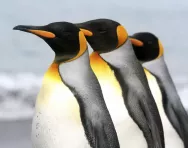
What are polar habitats?
Polar habitats are located at the very top and very bottom of the Earth. They are cold, windy and have a lot of snow and ice. It’s even too cold for trees to grow.
Tundra takes up a lot of the area of polar habitats. It’s the only place where any plants can grow, but the ground only thaws just enough for short grasses and moss – tree roots can’t go as far down into the ground as they need to because it’s frozen. Animals who live in polar regions have adapted by having thick fur or feathers, and hunting fish or each other rather than relying on plants for food.
Top 10 facts
- Polar habitats are located in the very north and very south of the globe – the two pole ends of the Earth.
- The northern polar region is called the Arctic, and in the south the polar region is the continent of Antarctica.
- Polar habitats have just two seasons – summer and winter (but even summer is normally very cold). In the summer, it is light for 24 hours a day (right at the north and south Poles, the sun doesn’t set for six whole months when it is summer) and in the winter it is dark for 24 hours a day.
- Polar habitats have tundra, which is ground that is nearly always frozen. The very top of it will thaw in the summer months so grasses and mosses can grow, but there isn’t enough room for tree roots in the non-frozen soil.
- Because it is too cold for trees to grow in arctic habitats, animals find other places to live such as holes in the ground, or in caves made from snow.
- Animals in the arctic also can’t rely too much on eating plants. Most are carnivores (they eat meat) and hunt for fish as well as smaller animals.
- Polar habitats get very, very cold – it can get as cold as -50°C in the Arctic, and temperatures in Antarctica have been as cold as -89°C.
- Animals in polar regions have adapted to survive in these extreme conditions. They have thick fur or feathers, blend in with the white snow, or hibernate during the coldest winter months.
- The mass of ice at the very tip of the north and south Poles is called the polar ice cap. It is always frozen, although the size of the ice cap changes when bits on the edge of it melt during the summer months.
- Global warming is changing polar habitats, especially in the Arctic. This means that animals like the polar bear and Arctic fox are becoming endangered.
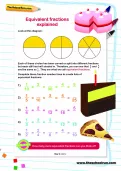

Boost Your Child's Learning Today!
- Let us create a tailored plan for your child
- We'll add English & maths resources each week to your plan
- Watch your child leap ahead in their learning & confidence
Did you know?
- Polar habitats are located on the very top and very bottom of the Earth – the North Pole, which is called the Arctic, and the South Pole, which is the continent of Antarctica.
- The Arctic includes parts of eight countries – Canada, the United States, Iceland, Greenland, Norway, Sweden, Finland and Russia
- Some parts of polar regions are always frozen, all year round. These are called ice caps, and they are located in the very centre of the Arctic and Antarctica.
- Tundra is land that only defrosts a tiny bit on the top during the summer, but below that stays frozen all the time. That always-frozen layer is called permafrost.
- It’s extremely cold in the polar habitats. Arctic tundra can be -12°C to -6°C, and it can get much colder than that further up the ice cap – as low as -50°C! In Antarctica, temperatures can be less than -90°C.
- Just like animals in hot deserts have to know how to stay as cool as possible, animals in polar habitats have to know how to stay as warm as possible.
- Some ways that animals in polar habitats stay warm are:
- Developing a thick layer of fat that keeps them cosy
- Having thick fur all over their body and feet
- Having thick layers of feathers
- Burrowing into the ground or into snowbanks (like igloos! )
- Migrating south during the coldest months
- Hibernating (sleeping) during the coldest months
Look at the gallery below and see if you can spot these images:
- Snowy owl
- Polar bear
- Caribou
- Pika
- Elk
- Arctic fox
- Muskox
- Walrus
- Beluga whales
- Orca
Gallery
About
There’s another kind of tundra on the top of very tall mountains – this is called alpine tundra. The ground isn’t always frozen there, so small shrubs can grow as well as grasses and moss.
Plants and vegetation in tundra includes:
- Moss
- Lichen
- Grass
- Small flowers
Animals and fish that you’ll find in arctic habitats include:
- Arctic fox
- Arctic hare
- Beluga whale
- Caribou
- Elk
- Lemming
- Polar bear
- Pika
- Marmot
- Muskox
- Reindeer
- Snowy owl
- Walrus
Animals you’ll find in Antarctica include:
- Albatross
- Krill (food for sea animals)
- Orca
- Penguins
- Seals
Insects in the Arctic habitat include:
- Arctic bumble bees
- Flies
- Grasshoppers
- Mosquitoes
- Moths
The rising temperatures on the Earth due to global warming mean that it’s changing the climate and terrain of polar habitats. Conditions that animals are used to and have adapted to are changing, which is making it more difficult for them to survive. For example, polar bears are an endangered species because the ice in the Arctic is melting – they rely on ice to get around.
Words to know:
Hibernation – a deep sleep that animals take during cold months; they don’t need to eat much or to be too warm, so hibernating helps them survive times when it’s very, very cold in the winter
Iceberg – a big lump of ice that has broken off from the polar ice cap and floated away; Icebergs are very dangerous for ships
Ice shelf/ice sheet – a thick layer of ice on top of land
Tundra – a region without any trees, and where subsoil is always frozen (the soil below topsoil); topsoil will defrost just enough for lichen, moss and some grasses to grow
Pack ice – areas where there are lots of bits of ice floating in the ocean; you get this when the edges of the polar ice cap melt in the summer
Permafrost – soil that is always frozen; tundra has a layer of permafrost underneath it
Polar ice cap – an area in the very middle of the North and South Poles that is always frozen; it ‘caps’ the top and bottom of the Earth
Sea ice – an area around the poles where the sea has frozen solid; the edges melt in the summer and freeze again in the winter
Related Videos
Just for fun...
- Download an arctic ecosystem colouring page
- Try some polar challenges from the Scott Polar Research Institute: find out about polar expedition diaries and write your own, try some polar packing, make your own narwhal and fold some penguin origami
- What would you wear to explore the Antarctic? Play a game to find out
- Take the Antarctic Wilderness Challenge quiz to show what you know
- Create a polar habitats diorama.
- Find polar games, icy fact files and Arctic arts and crafts on the WWF's Go Wild children's site
- Make some Antarctic recipes: sledging biscuits, pemmican, hoosh and bannocks
- Join top scientists in an interactive Polar Lab to learn more about our planet’s past... and preview where we might be headed
- Take a polar exploration quiz
- Complete an Antarctic food web activity online
- Make your own Polar habitat paper dioramas: an Arctic and Antarctic glacier diorama and an Arctic and Antarctic aurora diorama
Books about polar habitats for children
Find out more
Watch a BBC Bitesize video about polar habitats
Read about what life is like in Antarctica
Information about the polar zones for children
Watch a BBC video to see how animals have adapted to live in the polar biome
Kids' guides to the Arctic and frozen deserts from DK FindOut!
Explore a wide range of objects from Antarctica in short films from the Scott Polar Research Institute
The Arctic information
The tundra biome explained
Animals that live in Arctic tundra habitats
Information about polar bears from National Geographic Kids
Read about foodwebs and ecosystems in Antarctica
See for yourself
Visit the Polar Worlds galleries at the National Maritime Museum in Greenwich
See lots of pictures of icebergs and find out more about them
Watch clips from the BBC documentary, Frozen Planet
Photographs of NASA engineer Tia Ferguson's science mission to Antarctica
